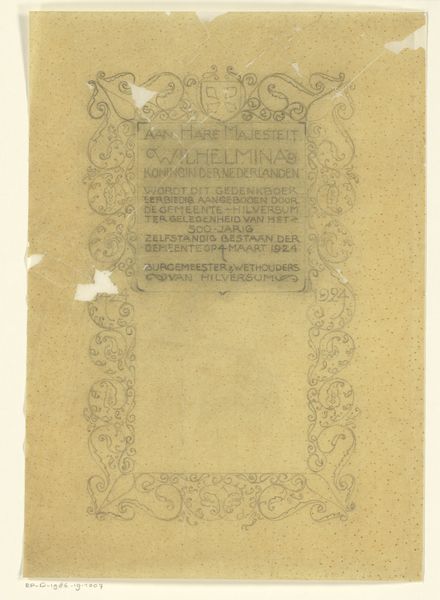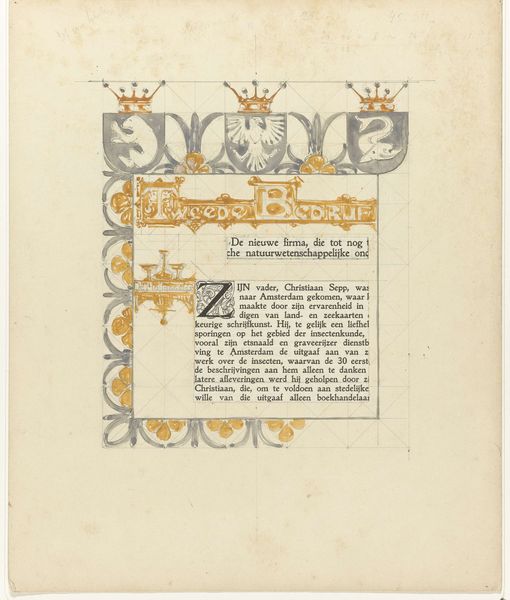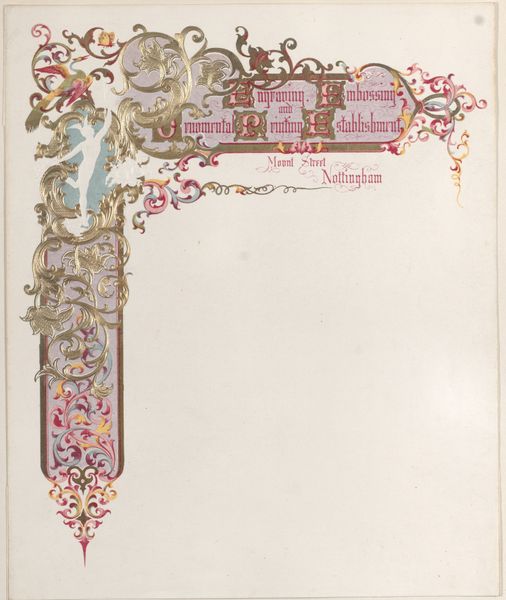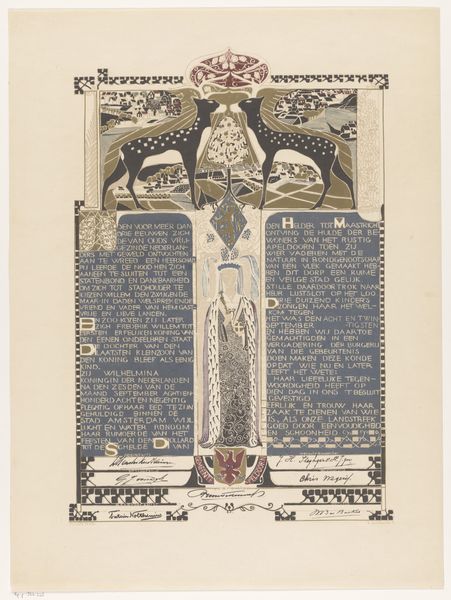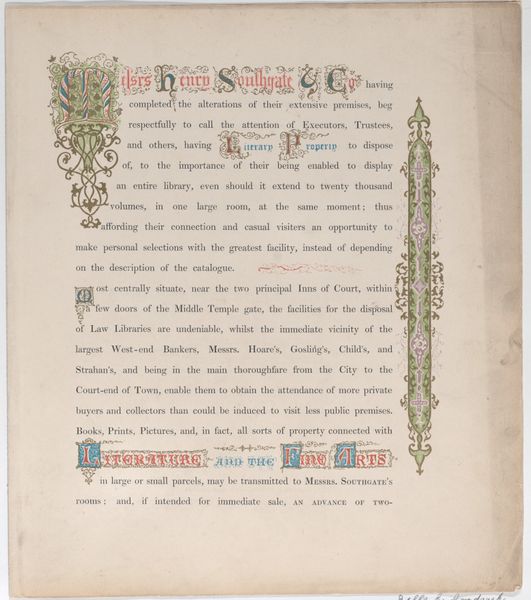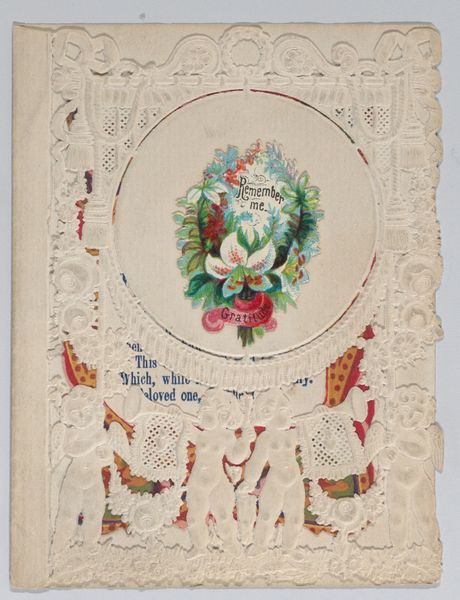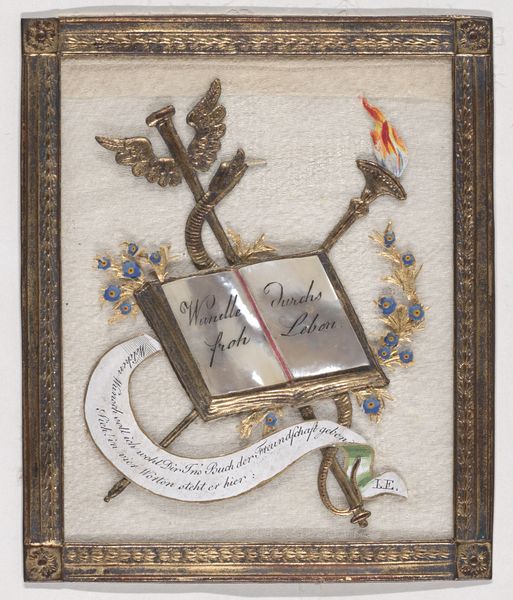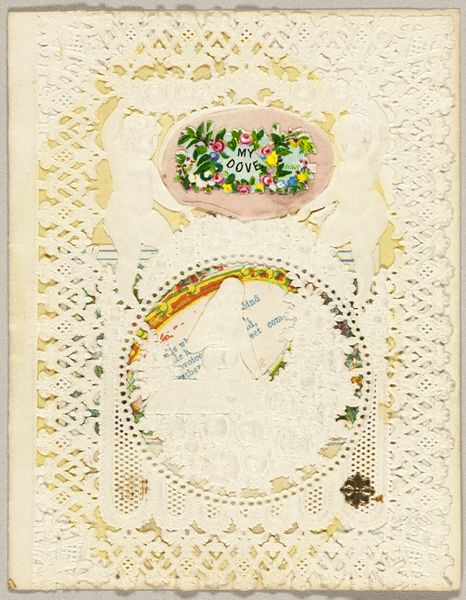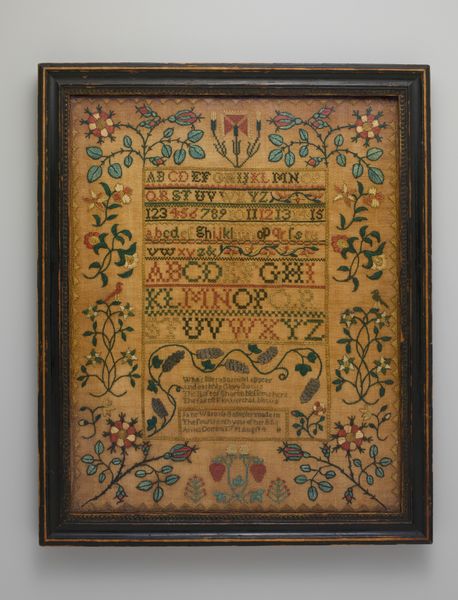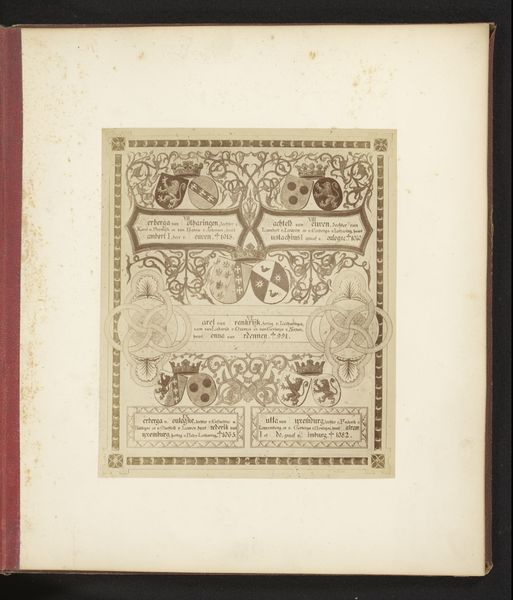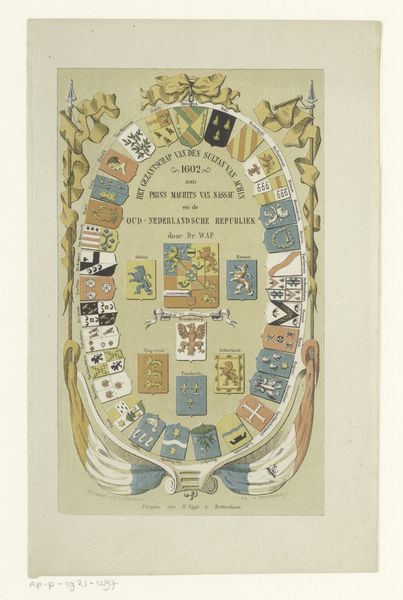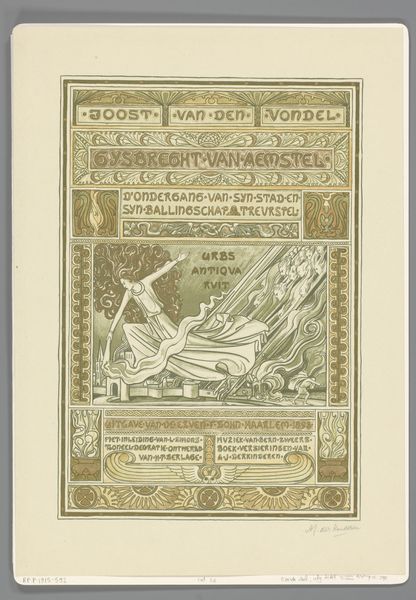
Opening van de Zuiderzeesluizen (Oranjesluizen) in 1870 door koning Willem III Possibly 1870 - 1874
0:00
0:00
drawing, print, watercolor, ink
#
drawing
#
dutch-golden-age
# print
#
watercolor
#
ink
#
decorative-art
#
decorative art
#
watercolor
Dimensions: height 115 cm, width 75 cm, depth 5 cm
Copyright: Rijks Museum: Open Domain
Curator: This intriguing drawing, whose creation is estimated between 1870 and 1874, captures the "Opening van de Zuiderzeesluizen (Oranjesluizen) in 1870 door koning Willem III." The artist is Pierre Joseph Hubert Cuypers. Editor: My first impression is one of ornate formality, but also, surprisingly, a sense of delicacy. The colors are muted, and the ink and watercolor seem almost faded, giving it a quiet, aged elegance. The layout feels deliberately structured, with that fascinating landscape detail at the very bottom. Curator: Indeed, the meticulous arrangement draws the eye upwards from the detailed rendering of the Zuiderzee sluices, navigating through a carefully embellished text proclaiming the King's role in this project. The combination of drawing, ink, and watercolor—elements from printmaking— speaks to its intended use as a record and celebratory display. What I find interesting is how it straddles the line between artwork and official document, perhaps highlighting the importance the project held. Editor: From a formalist perspective, the use of watercolor and ink creates a tension between precision and fluidity. Notice how the sharp lines defining the lettering contrast with the more impressionistic rendering of the landscape, creating visual interest through varying textural approaches within a limited color palette. But tell me, what of the labour involved? Curator: Ah, a pertinent question! The labor here, quite apart from Cuypers’ own craft, extends to the various workshops responsible for reproducing this design on a mass scale; and further, this work testifies to the collective labour of the men who actually built these structures, sluices and dams which facilitated trade and security across the Netherlands. And consider the materials involved, all linked through global trade networks. Editor: It's an artifact deeply enmeshed within systems of production and commerce, reflecting on both human effort and power. What begins with watercolours then broadens into broader implications tied directly to economic influence; even what may appear a work confined within the "decorative arts". Curator: Absolutely. The confluence of aesthetic elements and economic contexts embedded inside artwork offers so many possible directions for critical investigation and interpretation. Editor: True. Each viewing brings new information as we sift among colours or within structure towards any deeper story; which remains ever exciting!
Comments
No comments
Be the first to comment and join the conversation on the ultimate creative platform.
